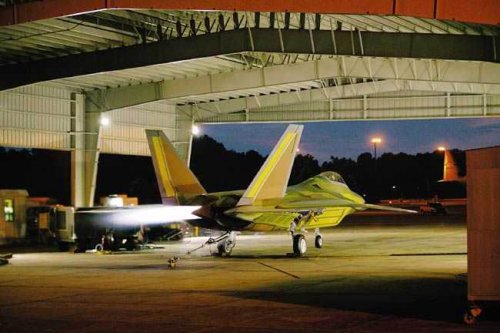Woody said:
It might not be strictly on topic but why is the detecting antenna always positioned at the same point as the illuminating antenna? It would seem to me that the easiest way to negate most radar stealth strategies would be to put the two some distance appart then all those efforts not to return radio waves back to the transmitter would be for nothing. Just a thought.
Cheers, Woody
PS: I'd put the illuminator in an expendable drone with an laser data link as it would obviously become a target

.
I'm pretty ignorant in radars, but here's my 2 cents:
There's the problem with knowing exactly where to put the radar, at what distance and what angle. And to do that miracle, you first need to know the flight path, and the altitude of the stealth plane itself to position them perfectly. Even if you gonna put them in perfect positions to do that. The angle and distance will constantly change because the stealth target doesn't stand still, it's constantly moving, especially if it's gonna have a radar warning reciever, you bet it's gonna try everything to fool the enemy's radars. So the transmitter and receiver antennas are gonna have to be able to constantly moving with it. This would require the 2 radars to have exceptional mobility to keep up with the target, a slight change in direction of the target would require you to instantly travel hundreds of miles (depending how great the distance is between the target and the 2 respective radars).
Knowing where to put the radars require some miracles, but to be able to put them where you want require some more miracles. There are 2 basic types of bistatic radars as far as I know: 2 antennas placed at such a position that the transmitting antennas radio wave gonna hit the aircraft, bounce back straight into the receiver antennas at the respective angle. This require not only to know the position in term of distance and angle of the aircraft, it also require to know exactly the angles of "spikes" radar return of the aircraft itself, pretty much know the aircraft as much as the its creators. This might be hard as the details of the rcs of an aircraft are kept in very tight security. And as I said, a shift of the aircraft in its direction would require the antennas and receivers to travel hundred of miles to keep a constant angle. A way to minimize this is to use multiple receivers scattered all over the area. This is what I called a system of system of system. And I believe by the time people can create such system, today stealth technology would be made obsolete by other much more convenient and technologically more realistic.
The second type of bistatic radar is called forward scatter radar, which means that the receiver isn't designed to receive the radar return that bounce back from the aircraft itself, but to receive the the aircraft' shadow (where the aircraft blocks the transmitter radio wave from being received by the receiver, creating a "shadow" on the receiver's screen). As the stealth aircraft works around its rcs, the "shadow" of it is uneffected by radar return. However, this require the receiver and transmitter antennas to be in a straight path. If you gonna put one on the ground, its counterpart antennas would have to be in a higher altitude than the intended stealth target at a 180 degree, because radio waves don't travel in an arc, it travels in straight path. This might work on low flying stealth aircraft (there are few to none, accept for stealth cruise missiles), but a high altitude stealth aircraft, it means you probably need one antennas end standing in space ;D. Another problem is that it's extremely vulnerable to attacks. In a conventional radar, where transmitter and receivers are located at the same place, you can stay behind your own defense. However, a bistatic radar would need one standing behind the enemy aircraft, exposed to the enemy offensive forces with nothing to protect it. Taking them out would be fairly easy, and once either the transmitter or receiver destroyed, the radar is compromised.
Hope my post has been helpful



